Archived Mold Remediation Blog Posts
Are Your Allergies Going Crazy?
4/23/2020 (Permalink)
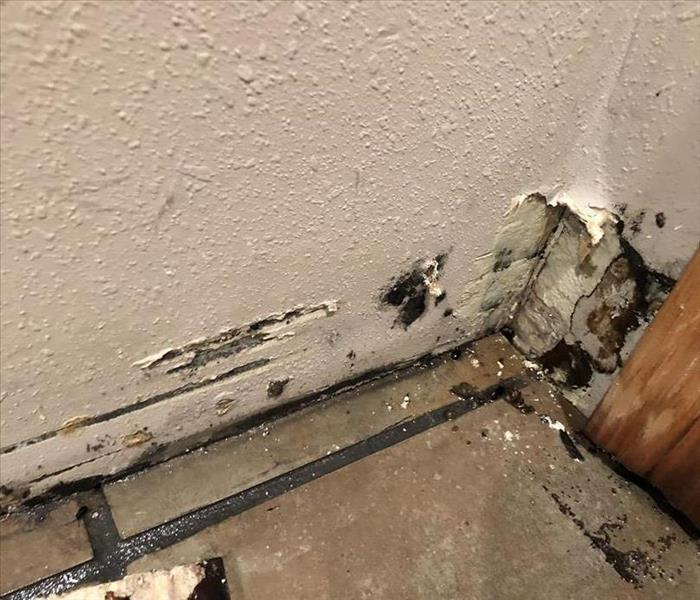 Some mold colonies are hidden, just like pollen and other allergy inducers. We're "Here to Help", call 712-262-4379.
Some mold colonies are hidden, just like pollen and other allergy inducers. We're "Here to Help", call 712-262-4379.
This time of year is always fun for allergy sufferers. Between the grass starting to grow again, flowers blooming, trees budding, farmers planting, you name it and those with allergies are in agony for days. What is making matters worse for those sufferers, is the mold that is all around us due to the wet weather the past few years.
Now some allergy sufferers will run and hide inside when things get bad and close their windows so the pollen counts stay low inside their home, but that won't always do the trick. Here are a few things that you can do to help around your home or business:
- Invest in higher quality air filters: Though they run higher in cost, the payoff can be seen in cleaner air around your home or business.
- Spring Cleaning: Spring cleaning is something on everyone's list, but during the pandemic we can all take advantage and take our cleaning up a notch. Use your mop and wipe your walls down, dust your trim, clean your screens. They all contain dust particles, stuck on mold spores, etc that can aggravate your sinuses.
- Have your HVAC unit cleaned: For a reasonable fee, SERVPRO of Spencer & Iowa Great Lakes can help schedule a cleaning of your HVAC unit and air ducts. Though money is tight, the cost is marginal and can save plenty in the long run with potentially less medication charges, lower heating and cooling bills, etc.
- Have your home or business checked for mold: Though mold is all around us, in some areas the conditions are ripe for colonies to start growing and causing a huge problem. The humid nature of basements or some homes in general are ideal for those colonies to grow out of control. As most of us become accustomed to the odor of our home or business, we need to leave it on our guests who may smell something. If they say it smells musty, take the time to find the root cause and if you can't call us!
Being an allergy sufferer myself, I can absolutely tell you that even the slightest issue can set my sinuses off. Take time to do the little things so you can enjoy those nights by the fire or outside smelling the scent of spring!
Proudly serving Clay, Dickinson, Emmet, Osceola, O'Brien, Palo Alto, Buena Vista, Sac, Lyon, and Sioux Counties.
712-262-4379
Spring is in the air...but what else is there?
4/26/2019 (Permalink)
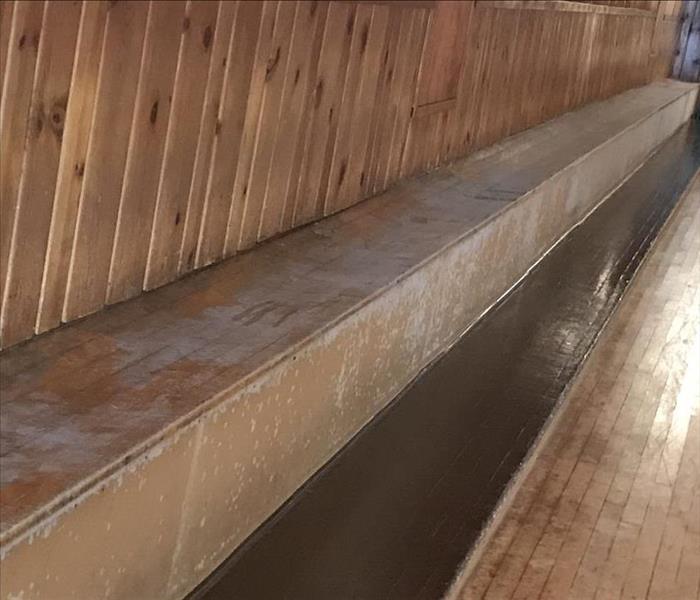 In the right conditions, mold can begin to grow in as little as 48 hours. Call today to schedule your mold assessment.
In the right conditions, mold can begin to grow in as little as 48 hours. Call today to schedule your mold assessment.
Mold is quickly becoming one of the more prominent areas of our business. With so many homes effected by the high moisture levels in the area throughout the past 18 months, many home and business owners are calling in with mold concerns in their home or business.
SERVPRO of Spencer & Iowa Great Lakes has the right products, the right staff, and the right training to make sure your home or business is mold free. We understand the stress that comes along with finding mold and not knowing what to do. Our team will assess your property, and to testing if you would like. Our assessment will include advise on fixing the underlying issue, a remediation plan, and results from the testing if you choose to go that route.
SERVPRO of Spencer & Iowa Great Lakes also has a construction team on staff to ensure anything that we have to remove can and will be replaced making sure it looks "Like it never even happened."
Call today for your mold concerns. 712-262-4379
Mold Cleanup...What's the Right Product?
2/4/2019 (Permalink)
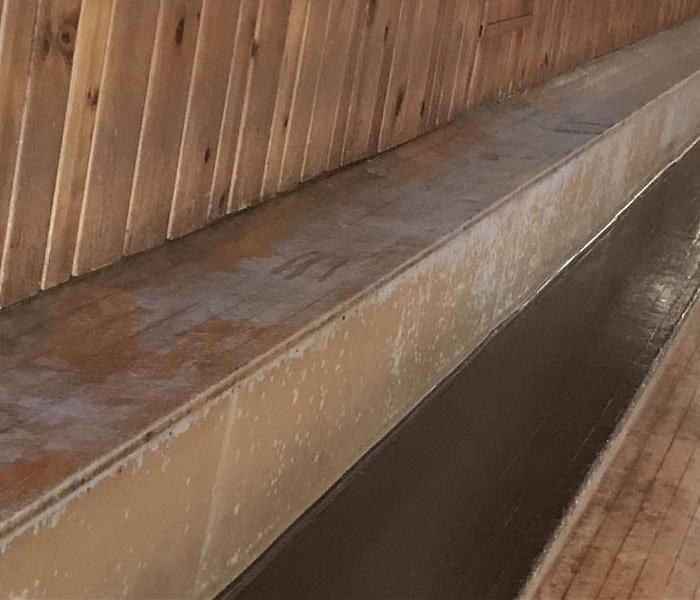 Mold can grow on and in many porous surfaces, just because you can't see it doesn't mean it isn't there. Call today for a mold assessment!
Mold can grow on and in many porous surfaces, just because you can't see it doesn't mean it isn't there. Call today for a mold assessment!
Mold appearing in your home or business can be very frustrating and stressful. I have run across some who have expressed feelings of guilt thinking they've neglected their home to the point that mold starts growing.
Fact of the matter is, mold grows nearly everywhere around us and can be very hard to detect at times. Though mold is present it cannot always be seen, hiding in the padding under carpet or behind a layer of paint in the drywall. These will remain unseen until either carpet is replaced or the discoloration starts to push through the drywall.
So you have found mold in your home or business, now what? For most they will simply go to the cleaner that is supposed to clean everything...bleach! Bleach, however, is the wrong answer. Due to the chemical makeup of bleach, it is a rather abrasive cleaner that will clean the discoloration from the surface, but it simply will not kill the mold spores that are the root cause of the growth.
SERVPRO of Spencer & Iowa Great Lakes uses quality products that not only help remove the discoloration but also eliminate the roots of the mold growth helping to reduce future growth. Our team uses FDA approved products such as Concrobium Broad Spectrum and Sporicidin to help clean and eliminate the potential for future growth.
If you suspect mold growth in your home or business, call SERVPRO of Spencer & Iowa Great Lakes for your mold assessment.
712-262-4379
Suspect Mold? Call for a Mold Assessment!
1/15/2019 (Permalink)
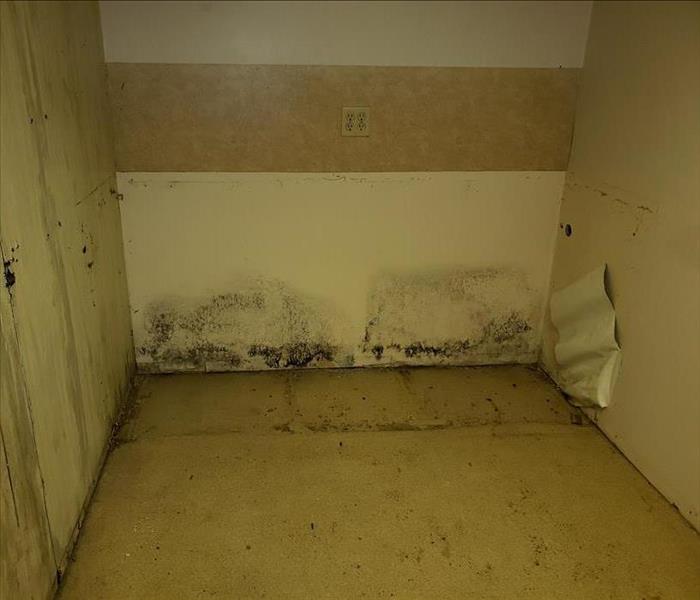 Not all mold can be so easily detected. If you have suspicious odors or discoloration call today for your assessment. 712-262-4379
Not all mold can be so easily detected. If you have suspicious odors or discoloration call today for your assessment. 712-262-4379
Mold can be a scary thought for some. For allergy and asthma sufferers mold can often associate breathing issues and other health related concerns.
It was not long ago that I discovered first hand some of those other health related concerns. Being an allergy sufferer myself the breathing issues are a major concern, the difference is subtle and often goes unnoticed until you are out of the effected home or business. With the extended exposure an individual can also experience headaches, other various allergic reactions, increased blood pressure, fatigue, and many other issues.
Do you suspect mold in your home or business? Call SERVPRO of Spencer & Iowa Great Lakes for your mold assessment.
When our team of professionals arrives you can expect a thorough inspection followed by a remediation estimate. If you would like, our team can also provide tape testing and air sampling to be sent to the lab for further assessment. Costs associated to the assessment depend on your location and the type of testing you would like completed.
Upon full completion of testing our team will provide the results from the lab on which strains of mold are present and provide you with an estimate on the remediation process.
Call the team of professionals that can help you from the first signs of mold through the entire remediation process.
SERVPRO of Spencer & Iowa Great Lakes
712-262-4379
Conditions looking prime for high mold growth in Spring
1/2/2019 (Permalink)
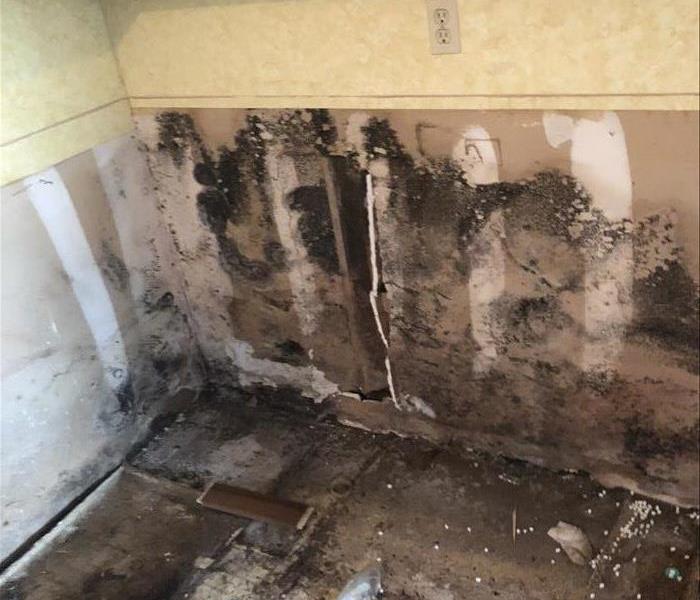 If you suspect you have mold in your home or business, call SERVPRO of Spencer & Iowa Great Lakes to set up a mold consultation and test today!
If you suspect you have mold in your home or business, call SERVPRO of Spencer & Iowa Great Lakes to set up a mold consultation and test today!
It’s estimated that more than 1 million types of mold exist, yet less than 10% have actually been named. This means mold is very common in both indoor and outdoor environments. While mold and humans can sometimes co-exist without issue, there are certain species of mold that can cause health effects for some people.
If the right conditions exist, mold will grow.
Those conditions include:
- Water - Different mold types require varying amounts of liquid before growth begins.
- Temperature - Normal indoor temperatures will promote mold growth.
- Time - Initial mold colonizers can take hold within one day after being exposed to an adequate water supply.
Mold growth can occur in any home, so it’s important to keep an eye out for situations that might promote mold activity. Roof/chimney leaks, wet basements, or condensation from ducts that dampen surrounding insulation are just a few examples of issues that make a house a prime target for mold growth.
If you suspect mold in your home, call SERVPRO of Spencer & Iowa Great Lakes to assess the situation. We have the knowledge, tools and track record to effectively remediate mold in your home or business.
If you suspect mold, call us today at 712-262-4379
What to Do:
- Stay out of affected areas.
- Turn off the HVAC system and fans.
- Contact SERVPRO of Spencer & Iowa Great Lakes for mold remediation services.
Follow These Mold Safety Tips If You Suspect Mold
9/24/2018 (Permalink)
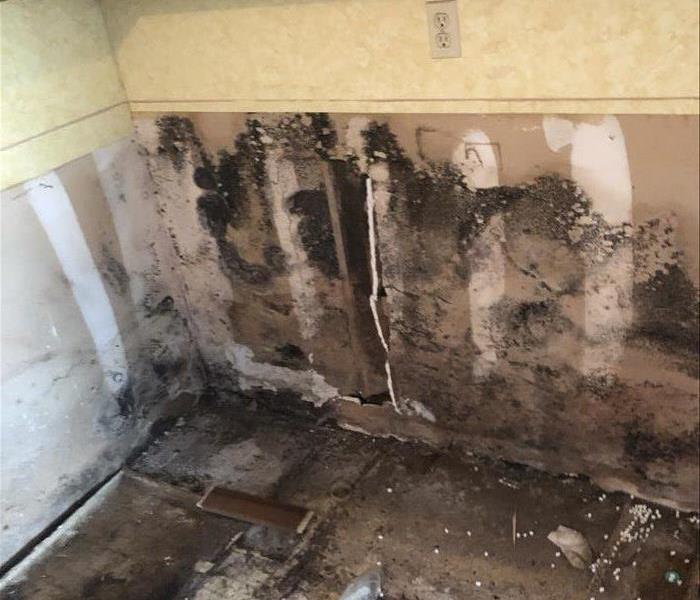 Be careful! Without proper training, you could be spreading mold throughout your home.
Be careful! Without proper training, you could be spreading mold throughout your home.
If you see visible mold, do not disturb it. You can inadvertently spread the mold infestation throughout your home. When mold is disturbed, the mold can release microscopic mold spores which become airborne and can circulate inside your home.
What to Do:
- Stay out of affected areas.
- Turn off the HVAC system and fans.
- Contact SERVPRO of Spencer & Iowa Great Lakes for mold remediation services.
What Not to Do:
- Don’t touch or disturb the mold.
- Don’t blow air across any surfaces with visible or suspected mold growth.
- Don’t attempt to dry the area yourself.
- Don’t spray bleach or other disinfectants on the mold.
About Our Mold Remediation Services
SERVPRO of Spencer & Iowa Great Lakes specializes in mold cleanup and restoration, in fact, it’s a cornerstone of our business. Our crews are highly trained restoration professionals that use specialized equipment and techniques to properly remediate your mold problem quickly and safely.
If You See Signs of Mold, Call Us Today – 712.262.4379
When to Call for Mold Remediation
9/24/2018 (Permalink)
 Mold can grow behind trim, cabinets, or wainscoting unbeknownst to the home or business owner. If not detected quickly enough, repairs can be costly.
Mold can grow behind trim, cabinets, or wainscoting unbeknownst to the home or business owner. If not detected quickly enough, repairs can be costly.
Have you ever walked into someone's home or basement and were blown away with a musty smell, allergy and asthma sufferers are especially sensitive to this odor.
Mold can be found nearly everywhere inside and outside of a home or business, the key to preventing any issues are knowing the signs of mold. If you cannot physically see mold then it should be understood that the musty odor is typically a key indicator that you have water damage somewhere in your home. If left unrepaired for a long period of time, mold can begin to grow.
Within the home or business mold can begin to grow on organic materials such as drywall, carpet, padding, etc. Mold also requires moisture in order to grow so prolonged exposure to leaky pipes, humid environment, poor drainage from gutters or dehumidifiers, leaks in the roof or windows, sump pump failure are the most common causes of prolonged moisture damage.
When mold begins to grow in a home or business it won't take long for those spots to become visible and those working or living in the area to begin feeling health issues. Those issues can range anywhere from simple headaches to potentially more severe respiratory issues. Even if an individual is not allergic to mold, prolonged exposure can start to take a toll on an individuals health.
Make sure if you see mold or have a musty odor in your home or business, call the experts at SERVPRO of Spencer & Iowa Great Lakes. Our team of experts can come in and assess your property and remediate any damage returning it back "Like it never even happened."
You can control mold
4/25/2018 (Permalink)
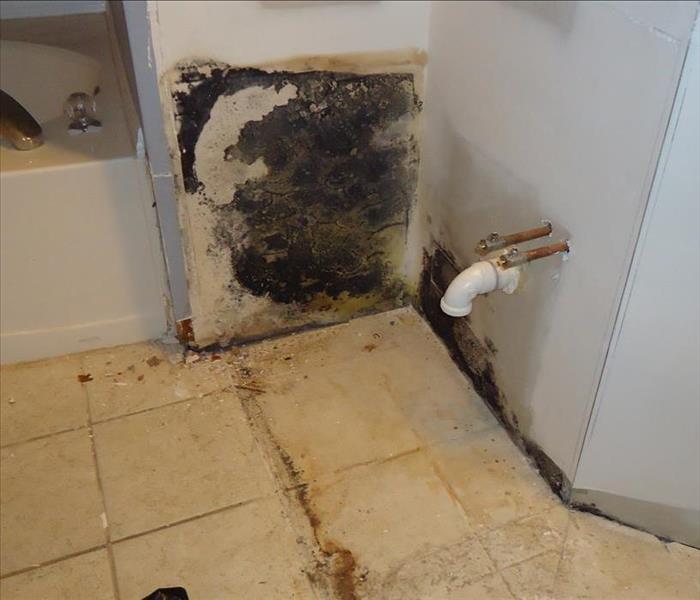 Learn how to control mold in your home.
Learn how to control mold in your home.
Here are some great tips from the CDC [https://www.cdc.gov/mold/dampness_facts.htm]
Inside your home you can control mold growth by:
- Controlling humidity levels;
- Promptly fixing leaky roofs, windows, and pipes;
- Thoroughly cleaning and drying after flooding;
- Ventilating shower, laundry, and cooking areas.
If mold is growing in your home, you need to clean up the mold and fix the moisture problem.
Mold growth can be removed from hard surfaces with commercial products, soap and water, or a bleach solution of no more than 1 cup of household laundry bleach in 1 gallon of water.
Mold growth, which often looks like spots, can be many different colors, and can smell musty. If you can see or smell mold, a health risk may be present. You do not need to know the type of mold growing in your home, and CDC does not recommend or perform routine sampling for molds. No matter what type of mold is present, you should remove it. Since the effect of mold on people can vary greatly, either because of the amount or type of mold, you can not rely on sampling and culturing to know your health risk. Also, good sampling for mold can be expensive, and standards for judging what is and what is not an acceptable quantity of mold have not been set. The best practice is to remove the mold and work to prevent future growth.
If you choose to use bleach to clean up mold:
- Never mix bleach with ammonia or other household cleaners. Mixing bleach with ammonia or other cleaning products will produce dangerous, toxic fumes.
- Open windows and doors to provide fresh air.
- Wear non-porous gloves and protective eye wear.
- If the area to be cleaned is more than 10 square feet, consult the U.S. Environmental Protection Agency (EPA) guide titled Mold Remediation in Schools and Commercial Buildings. Although focused on schools and commercial buildings, this document also applies to other building types. You can get it by going to the EPA web site at https://www.epa.gov/mold/mold-remediation-schools-and-commercial-buildings-guide.
- Always follow the manufacturer’s instructions when using bleach or any other cleaning product.
MOLD PREVENTION TIPS
- Keep humidity levels as low as you can—no higher than 50%–all day long. An air conditioner or dehumidifier will help you keep the level low. Bear in mind that humidity levels change over the course of a day with changes in the moisture in the air and the air temperature, so you will need to check the humidity levels more than once a day.
- Be sure your home has enough ventilation. Use exhaust fans which vent outside your home in the kitchen and bathroom. Make sure your clothes dryer vents outside your home.
- Fix any leaks in your home’s roof, walls, or plumbing so mold does not have moisture to grow.
- Clean up and dry out your home thoroughly and quickly (within 24–48 hours) after flooding.
- Add mold inhibitors to paints before painting.
- Clean bathrooms with mold-killing products.
Remove or replace carpets and upholstery that have been soaked and cannot be dried promptly. Consider not using carpet in rooms or areas like bathrooms or basements that may have a lot of moisture.
To learn more about preventing mold in your home, see the Environmental Protection Agency’s publication A Brief Guide to Mold, Moisture, and Your Home[PDF – 1.38 MB].
In addition to causing significant property damage, mold can produce allergens and irritants that can cause health effects. SERVPRO Franchise Professionals understand mold and mold growth and have the training and equipment to remediate the mold in your home or business.
Have Mold Related Questions?
Call Us Today 712-262-4379
Don't DIY with Water Damage
2/21/2018 (Permalink)
 This mold could have been avoided had the client called SERVPRO to dry their water damage.
This mold could have been avoided had the client called SERVPRO to dry their water damage.
This commercial client had a water leak and cleaned up the water without calling us. They assumed they had everything dried and went back to business as usual until their staff noticed a smell. This time they called SERVPRO of Spencer & Iowa Great Lakes.
Our professionals discovered mold had developed as a result of insufficient drying. We then had to tear out the affected materials and reconstruct part of the room.
Our team wants to save you both money and time by drying water damage correctly the first time doing minimal reconstruction. We can restore your facility quickly and get you back in business without subjecting your staff to the health hazards mold may cause.
If you ever have a doubt about water damage, call us and we’ll come out with thermal cameras and water meters to assure you that the area was properly dried.
If it's already too late, don't worry, we can take care of mold too!
Learn more here: http://www.SERVPROspenceriowagreatlakes.com/mold-remediation
Why You Should NEVER Use Bleach to Clean Mold
1/15/2018 (Permalink)
 The surface mold looks gone (it's bleached white) but the internal mold always remains to grow back.
The surface mold looks gone (it's bleached white) but the internal mold always remains to grow back.
Chlorine bleach is generally seen as your “go-to” cleaner for tough jobs. Mold removal requires a heavy duty cleaner, but recently, many of the hazards of bleach are gaining more media attention causing people to take a closer look at the way they clean in Spencer, Storm Lake and Milford, Iowa.
OSHA (Occupational Safety and Health Administration) was one of the first federal agencies to STOP recommending the use of liquid bleach for mold remediation. The EPA (Environmental Protection Agency) has since edited their “A brief guide to mold and moisture and your home” to exclude their once suggested use of bleach as a means to kill mold.
Big bleach labels have promised you that nothing else will do the job like bleach. Chlorine bleach is most well-known for its disinfecting properties but that doesn't mean it's the best choice for mold. Its main function is to disinfect and to, well, bleach or change the color. But after use, what usually happens? The moldy color looks like it’s gone but within a week or two the mold usually comes back and sometimes worse! Most homeowners don’t put together that it’s the bleach causing this reaction and not a really bad case of mold. The fact remains that if the mold is not removed from the material, it will most likely always return.
Does Bleach kill mold?
Yes, but it comes with a catch. Bleach labels will warn you that chlorine bleach will only be effective on a “hard, non-porous surface.’’ This basically means that chlorine bleach is not made to “soak in.” Therefore, its disinfecting properties are limited to a hard surface like tile or glass. So here’s the problem: To ensure survival, mold spores spread its roots (Mycelia) deep into a porous surface. Mold remediation requires a cleaner to reach deep down into wood and other porous building materials to remove or "pull out" the roots. The properties of bleach prevent it from soaking into these materials. The surface mold looks gone (it's bleached white) but the internal mold always remains to grow back.
Another issue: Bleach contains 90% water and mold LOVES water. When bleach is applied, the chlorine quickly evaporates after use leaving behind A LOT of water. This water often soaks into the porous surface allowing the mold to flourish and re-grow in this moist environment. So in effect, using bleach actually feeds the internal mold spores! Although the surface may look bleached and clean, the remaining spores will root deeper, stronger and will often return worse than before.
Bleach and mold. A few facts to remember:
- In some cases, bleach will encourage toxic mold to grow where it was not present before.
- Bleach will only remove the green stain from mold. The surface will appear clean but internal roots will continue to grow.
- OSHA and the EPA have specifically advised against the use of bleach for mold remediation.
- Chlorine bleach is caustic and extremely harmful to wood and many other surfaces. If bleach is used on wood, it will weaken the wood by breaking down its fibers. This can create further problems with the structural integrity of the home.
- When bleach is mixed with ammonia it creates a deadly gas!
- Bleach itself is considered a toxic chemical and is classified the same as gasoline.
- In its gaseous form (room temperature) chlorine releases Dioxins, a known cancer causing compound.
- Bleach is highly corrosive to skin. Exposure to bare skin creates a hydrolysis reaction. This means the “oily” feeling is actually the top layer of your skin beginning to dissolve!
- Bleach is not only hazardous to your health, it will make your mold problem worse in the long run.
A safer and more effective alternative to Chlorine Bleach:
Dead or alive, mold spores can still remain allergenic. In some severe cases, depending on the material, it may need to be replaced. Hard surfaces that aren't ruined by moisture damage can be salvaged and cleaned.
In this scenario, we recommend Concrobium Mold Control® is an EPA-registered solution that remediates and prevents mold without any harmful chemicals. Concrobium® Mold Control dries to form an invisible antimicrobial shield that encapsulates and physically crushes mold spores. The antimicrobial barrier remains on surfaces to provide continuous protection against mold growth.
We also use Sporicidin®, an EPA registered disinfectant for hard surfaces, and a cleaner and deodorizer for porous surfaces. The active ingredients phenol and sodium phenate, are also FDA approved for use in over-the-counter medicines such as throat sprays. Effective against a wide range of pathogens, Sporicidin Disinfectant Solution can be used for mold remediation work, bloodborne pathogen work (Tuberculocidal), and sewage jobs. Sporicidin® provides residual bacteriostatic activity for up to six months. In addition to its biocidal activity, Sporicidin® is also an effective deodorizer, and is less hazardous than other biocide type products.
Our team finishes with a mold resistant coating that adheres to porous and non-porous surfaces and leaves a durable, long-lasting barrier.
If mold has occurred once, it can always occur again. SERVPRO woprks hard to help keep this from happening and will provide your home with a protective barrier to prevent future mold growth.
To learn more about our mold remediation services visit our Mold Remediation and Restoration webpage.
Why Do-It-Yourself Mold Testing Kits are Useless
1/4/2018 (Permalink)
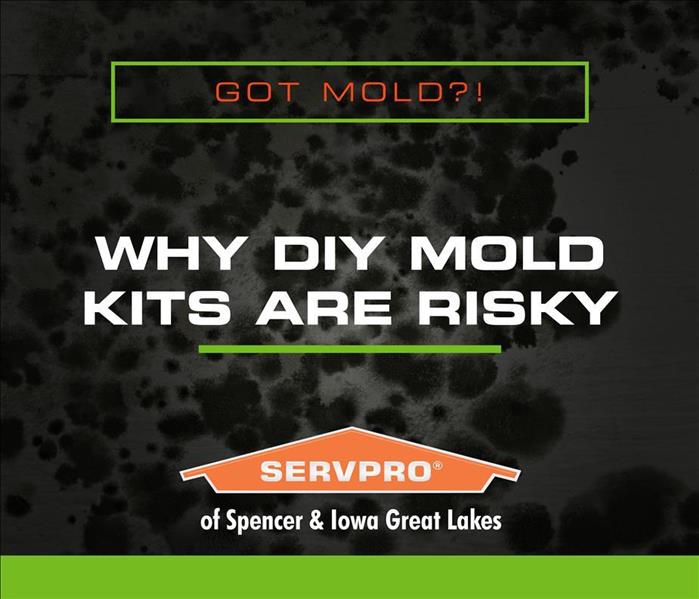 Call SERVPRO of Spencer & Iowa Great Lakes for all of your mold concerns. We can refer you to a certified environmental hygienist.
Call SERVPRO of Spencer & Iowa Great Lakes for all of your mold concerns. We can refer you to a certified environmental hygienist.
If you look on the internet, there are scores of DIY mold test kits. Before you invest in one of these kits, here are things you ought to know about mold:
- Mold is everywhere and every single house has some form of “mold.”
- Most self-test mold kits only tell you if your home has mold, but often provides false negatives and positives. It also does not tell you what kind of mold or how to kill it.
A true mold test can only be conducted by a Professional Environmental testing company; they determine the type of mold, the source of the moisture, and how to kill the mold at the core. They create a protocol, which can be read by an IICRC professional (like us!). It’s best to use a testing company that does not do cleaning themselves because their assessment will be unbiased.
- Mold is more often hidden, sometimes under the floor or in the walls, or in your air ducts
Where the mold is located, often dictates where the moisture is affecting the building
- Untreated water damage may result in mold growth within 24-48 hours of the event
Wood, insulation, fiberglass, carpet and other organic substances become a thriving environment for mold once there is moisture present for more than 24 hours. After a week, it is almost guaranteed.
Free estimates or removing mold yourself cost homeowners more in the long run
Be wary of companies who advertise free mold testing. Free mold tests are often offered by people who are uncertified or inexperienced and if they do the mold testing themselves, they are using these kits mentioned above. Unless they are a certified Environmental Hygienist and have a PhD in microbiology, they do not have the knowledge or resources to truly diagnose the mold condition in your home.
- The source of the mold is never addressed, so the problem is reoccurring.
- They use the “self-test” kits mentioned above instead of environmental testing with diagnostics
- Remove only topical mold instead of killing it at the source
- They often remove more walls and floors than needed which increases the price to rebuild.
- They do not remove enough, or don’t use the right materials which brings the mold back.
This means you have to pay to have it removed again, and have more sanitation and demolition performed, which increases the price to rebuild and replace tremendously.
What you should do instead
Having mold can be scary, especially if anyone in your home is prone to getting sick (people with asthma, low immune systems, allergies, babies and the elderly). We recommend the following course of action if you need to have mold removed from your home.
- Measure the area affected and check for moisture.
- Call your insurance company, ask:
- If you are covered for mold
- What is your deductible
- What is your coverage
- Ask for a company that they approve of for mold mitigation (Chances are, it’s us.)
If your insurance company says you can use anyone – or if you are not going through insurance then look for someone who is certified in
- IICRC, Water Restoration Technician
- IICRC, Mold restoration
- IICRC, Applied Structural Drying
- Now that you’re armed with knowledge, it’s time to start making some calls.
Now that you know your coverage, how much visible mold there is in your home, and whom your insurance company approves as mold remediation specialists. It’s time to start making some calls.






 24/7 Emergency Service
24/7 Emergency Service




